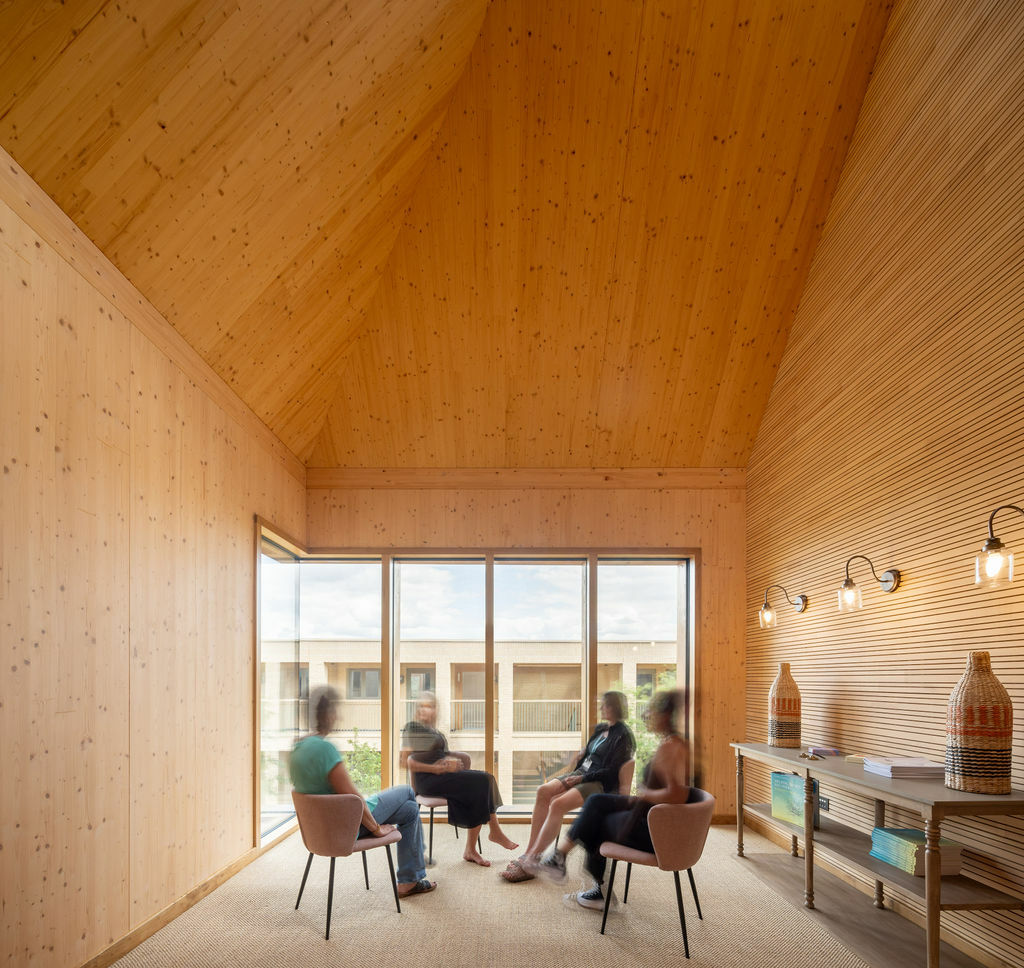Trauma Informed Design
Area: Design, planning and building
Trauma informed design is a new and evolving approach to designing the built environment that considers the potential impact of trauma on people's experiences and needs. It is based on the principles of trauma-informed care (Di Raimo, 2022), which recognizes that trauma can profoundly impact all aspects of a person's life. Accordingly, designers consider how the physical environment can help people feel safe, connected, empowered, and supported. Both trauma informed design (TID) and trauma informed care acknowledge that trauma can profoundly impact all aspects of a person's life, including their physical and mental health, cognitive functioning, behaviour, and relationships. In a TID process, all decisions about the physical environment are filtered through the overlapping lenses of psychology, neuroscience, physiology, and cultural factors (Bollo & Donofrio, 2021; Di Raimo, 2022) (Owen & Crane, 2022). TID environments are uniquely designed to meet the needs of the intended users, recognizing that what is helpful and healing for one person may not be for another.
TID builds on the "ability of architects to listen to the potential users" (Di Raimo, 2022). Designers should think about how people will feel in the living space, both physically and emotionally. They must consider: (1) how the space can help people feel comfortable (safety and trust), (2) how the space facilitates community-building possibilities and practices (sense of belonging, opportunities for social interactions and collaborations), and (3) how the space can suit/serve different needs, where people have the right to make their own choices (empowerment and adaptability of the environment in order to creating spaces that are flexible and adaptable to personal needs, for example, facilitating, adjustable furniture and accessible amenities).
These are some examples of how to create a comfortable and supportive home for people, considering TID principles: (1) Open corridors with cues and landmarks can help people with cognitive impairments or mobility issues to navigate the space more easily. (2) Natural light can improve mood and well-being. (3) Artwork depicting natural elements, such as plants and landscapes, can also positively impact mood and well-being. Abstract art can be overstimulating for some people, so it is best to avoid it in this setting. (4) Colours such as blue, green, and purple are less arousing than other colours, so they can help create a calming and relaxing environment. (5) Natural materials like wood and stone can create a warm and inviting atmosphere. (6) Home design with commercial sustainability can help reduce the home's environmental impact and make it more affordable to operate. (7) People need a certain degree of privacy, even in a communal setting (e.g., by providing locking cabinets and lockers). (8) People should be able to personalize their living space to make it feel like home (e.g., by providing things like magnetic writing boards and other items that people can use to express themselves). (9) Open areas for relaxation separate from bedroom, in order to provide people with a place to relax and socialize without having to be in their bedrooms. (10) Soft, comfortable furniture can help people to relax and feel comfortable. (11) Adequate and easy access to services, staff, and counselling to support their needs. (12) Adequate indoor and outdoor playing spaces to assure the physical and mental well-being of children. (13) Adequate separation of men's and women's sleeping and bathroom spaces: to guarantee privacy and safety. (14) Accommodation for pets; since they provide companionship and support, it is essential to consider their needs as well.
Apna Ghar said the following about the relevance of TID (Forbes, 2019): "[It] requires realizing how the physical environment affects identity, worth and dignity, and how it promotes empowerment. It requires recognizing that the physical environment has an impact on attitude, mood and behavior because there is a strong link between our physiological state, our emotional state and the physical environment. It also means that intentionally designing and maintaining healing environments leads to empowerment and resists retraumatizing those who have already experienced so much trauma."
TID recognizes that people are resilient and can heal from trauma (Di Raimo, 2022). Hence, it encompasses the creation of both physically secure living environments and emotionally and psychologically safe spaces. It can be applied to a wide range of spaces (Di Raimo, 2022; Anderson, 2010; Gill,2019), including schools, hospitals, offices, service providers, and homes. According to the Preservation of Affordable Housing (2023), TID can be used to create affordable rental housing that is safe and supportive for residents and staff. TID is not only for vulnerable people. Calming and supportive spaces, appealing colours, comfortable furniture, and natural elements facilitate good health in general. It can improve the well-being of residents, enhance their productivity, and facilitate a more positive work environment in any organization.
TID is more than just a design process, it is a way of listening to the potential users of a space and understanding their needs and experiences in order to link design methods and psychological considerations through the contributions of several disciplines (Bollo & Donofrio, 2019; Bollo & Donofrio, 2021), and to rediscover and consider how the physical environment affects people (Di Raimo, 2022). It is still a relatively underutilized approach to design, but it has the potential to shift the focus from housing to healing, especially in social housing, where the psychological impact of the living environment is particularly important.
References
Anderson, D. (2010). Humanizing the hospital: Design lessons from a Finnish sanatorium. Canadian Medical Association Journal.
Bollo, C., and Donofrio, A. (2019). Common Area Allocation, Patterns and Design in Permanent Supportive Housing. ARCC Conference Repository.
Bollo, C. and Donofrio, A. (2021). Trauma-informed design for permanent supportive housing: four case studies from Seattle and Denver. In Housing and Society.
Di Raimo, A., Petrillo, M., and Thomas, M. (2022). Why resilient communities need trauma-informed care the case for trauma informed design for resilient cities. Resilient Communities and the Peccioli Charter: Towards the Possibility of an Italian Charter for Resilient Communities. Springer.
Gill, N. (2019). The importance of trauma-informed design. Forbes Nonprofit Council.
Owen, C., Crane, J. (2022) Trauma-Informed Design of Supported Housing: A Scoping Review through the Lens of Neuroscience. Int. J. Environ. Res.
Public Health. https://doi.org/10.3390/ijerph192114279
Preservation of Affordable Housing (2023) What is trauma informed design? https://traumainformedhousing.poah.org/what-is-trauma-informed-design
Created on 10-12-2023 | Update on 23-10-2024
Related definitions
No entries
Related cases

Hope Street
Created on 23-05-2025
Related publications
No entries

